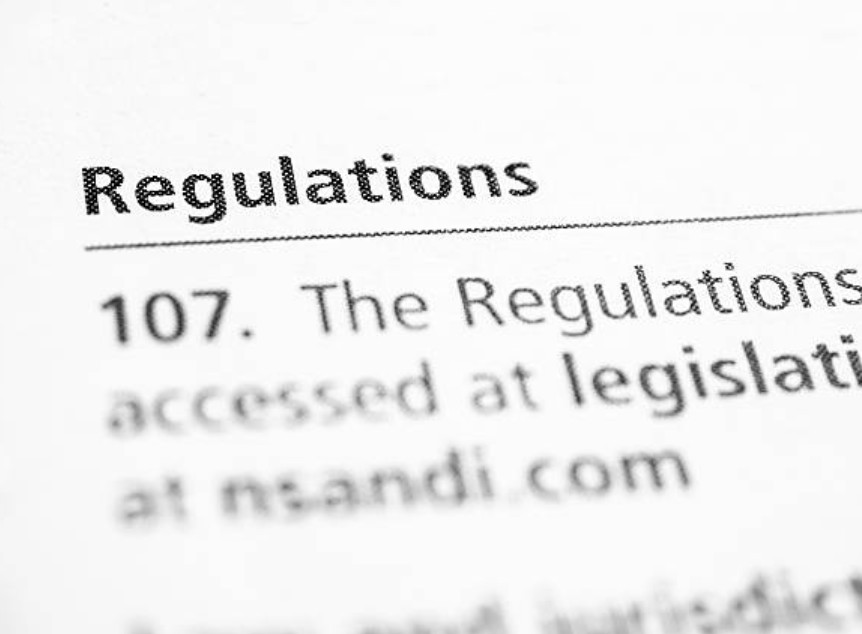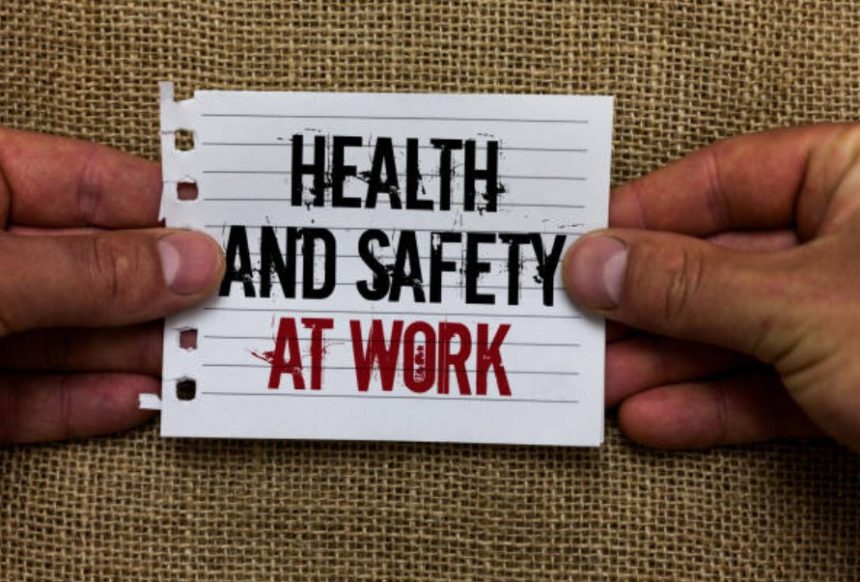What Law Regulates Health and Safety in the Workplace? This pivotal question lies at the core of UK workplace legislation and shapes the responsibilities of employers and the rights of employees across the nation. In this comprehensive news blog post, we delve into the evolution of UK health and safety laws, reveal how these regulations are applied in everyday business practices, and provide practical insights to foster a proactive safety culture.
What Is the Foundation of UK Health and Safety Legislation?
At the heart of the UK’s approach to workplace safety is the Health and Safety at Work Act 1974. Enacted over four decades ago in response to major industrial accidents and increasing awareness of occupational hazards, this landmark legislation set the stage for a systematic approach to risk prevention and management.
Essential Aspects of the Health and Safety at Work Act 1974
- Employer Responsibilities:
- Ensure a secure and hazard-free workplace.
- Supply necessary training, safety equipment, and resources.
- Identify and mitigate foreseeable risks to both employees and the public.
- Employee Responsibilities:
- Follow established safety protocols and participate in training sessions.
- Cooperate with employer-led safety measures.
- Promptly report any hazards or potential safety issues.
- Regulatory Oversight:
- The Health and Safety Executive (HSE) oversees the implementation and enforcement of the Act. This body conducts inspections, investigates incidents, and issues notices to ensure compliance.
What Are the Supplementary Regulations That Enhance the Act?

While the Health and Safety at Work Act 1974 provides the foundational framework, several additional regulations address specific risks and industry challenges, ensuring that safety standards keep pace with evolving workplace environments.
Which Regulations Address Specific Workplace Hazards?
- Health and Safety Management Regulations Act 1999
-
- Focus: Mandates comprehensive risk assessments and the implementation of preventative measures.
- Impact: Encourages a proactive approach to identifying and mitigating potential hazards.
- Regulations for Managing Hazardous Substances in the Workplace (COSHH) 2002
-
- Focus: Governs the safe handling, storage, and disposal of hazardous substances.
- Impact: Protects workers from chemical exposures and associated health risks.
- 1992 Framework for Occupational Health, Safety, and Wellbeing Standards
-
- Focus: Sets standards for the physical working environment, including ventilation, lighting, and cleanliness.
- Impact: Ensures that workplace conditions are not only safe but also conducive to employee well-being.
What Law Regulates Health and Safety in the Workplace?
This section directly addresses the question: What Law Regulates Health and Safety in the Workplace?
At its core, the answer lies in the Health and Safety at Work Act 1974—a comprehensive legal framework that not only establishes the duty of care for employers and employees but also underpins a culture of continuous improvement in workplace safety.
In-Depth Overview of the Health and Safety at Work Act 1974
- Historical Context and Rationale:
Introduced in response to industrial tragedies and mounting safety concerns, the Act marked a revolutionary shift toward proactive risk management rather than reactive safety measures. - Fundamental Principles:
- Duty of Care: Employers must take all reasonably practicable steps to ensure the health, safety, and welfare of all employees and any individuals affected by work activities.
- Risk Management: Continuous identification, assessment, and mitigation of risks are mandated.
- Employee Involvement: Workers are encouraged to participate actively by reporting hazards and contributing to the development of safety practices.
- Legal Accountability: Severe penalties, including fines and criminal charges for gross negligence, underscore the Act’s importance.
- Enforcement and Oversight:
The HSE plays a critical role in enforcing this legislation, conducting inspections, and ensuring that businesses meet the required safety standards.
Detailed Breakdown: Key Components and Their Impact
To further illuminate the significance of the Act, consider the table below, which outlines its specific components alongside their practical implications:
| Component | Description | Practical Impact |
| Employer’s Duty of Care | Mandates safe working conditions and the provision of necessary safety measures. | Reduces workplace accidents and builds trust among employees. |
| Risk Assessments and Management | Requires ongoing identification and control of workplace risks. | Enables proactive improvements and helps mitigate the potential for catastrophic incidents. |
| Employee Cooperation | Encourages adherence to safety guidelines and prompt reporting of hazards. | Fosters a culture of shared responsibility and continuous safety improvements. |
| Regulatory Enforcement | The HSE conducts inspections and enforces compliance with the Act. | Acts as a deterrent against non-compliance, ensuring all employers maintain best practices in safety. |
Real-World Applications and Future Implications
Manufacturing Sector:
UK manufacturers have significantly reduced workplace injuries by integrating the Act’s principles into their operational protocols. After several near-miss incidents, many plants revamped their safety measures based on HSE guidelines, resulting in a safer working environment.
Construction Industry:
With high-risk environments being common, construction firms rely on strict adherence to the Act. Enhanced safety audits, rigorous PPE requirements, and detailed site inspections have all contributed to improved safety records.
Innovation and Technology:
The Act has spurred the integration of modern technologies, such as IoT sensors and real-time safety analytics, enabling businesses to monitor hazards and maintain compliance more effectively. This digital transformation is setting the stage for future trends in workplace safety, including a broader focus on mental health and ergonomic design.
By expanding our understanding of What Law Regulates Health and Safety in the Workplace? It becomes clear that the Health and Safety at Work Act 1974 is more than a regulatory mandate—it is a dynamic framework that promotes continuous improvement, accountability, and innovation in the UK workplace safety.
How Do UK Regulations Impact the Daily Operations of a Business?

Implementing these robust health and safety regulations goes beyond legal compliance. They create a blueprint for a secure, productive, and engaging work environment that can transform operational success.
What Practical Steps Can Businesses Take for Compliance?
- Conduct Regular Risk Assessments:
- Identify potential hazards across all operational areas.
- Update assessments following significant operational changes.
- Invest in Continuous Training:
- Organise ongoing safety training sessions and emergency drills.
- Tailor training programs to address industry-specific risks.
- Maintain Detailed Safety Records:
- Keep comprehensive documentation of all safety inspections, incident reports, and corrective actions.
- Leverage digital tools to streamline record-keeping and compliance monitoring.
- Foster Open Communication:
- Establish channels for employees to report hazards and suggest safety improvements.
- Promote a culture of transparency and proactive risk management.
What Does the Current Legislative Landscape Look Like?
For a clear understanding of the overall UK health and safety framework, the table below provides an updated snapshot of key legislations, their core provisions, and enforcement details:
| Legislation | Key Provisions | Enforcement Body | Year Introduced | Latest Update |
| Health and Safety at Work Act 1974 | Sets a general duty of care for the health, safety, and welfare of all workers. | Health and Safety Executive (HSE) | 1974 | Ongoing revisions |
| Management of Health and Safety at Work Regulations 1999 | Requires regular risk assessments and the implementation of preventive measures. | HSE | 1999 | Periodic reviews |
| Control of Substances Hazardous to Health (COSHH) Regulations 2002 | Regulates the safe handling of hazardous substances in the workplace. | HSE | 2002 | Regular updates |
| Workplace (Health, Safety and Welfare) Regulations 1992 | Establishes standards for workplace conditions, including ventilation and facilities. | HSE | 1992 | Updated as needed |
How Can Employers Cultivate a Culture of Safety?
Creating a culture where safety is integral to every business process is vital. A proactive safety culture not only minimizes risks but also enhances employee morale and operational efficiency.
What Strategies Can Turn Compliance into a Competitive Advantage?
- Enhanced Training Programs:
- Provide regular safety education and certification courses.
- Use interactive training sessions that simulate real-world scenarios.
- Integrated Safety Systems:
- Implement digital tools for real-time hazard monitoring and compliance reporting.
- Automate alerts and safety checks to streamline the process.
- Employee Engagement:
- Form safety committees that include representatives from all organizational levels.
- Recognize and reward employees for proactive safety measures.
- Continuous Improvement:
- Regularly review and update safety protocols.
- Benchmark against industry best practices and incorporate employee feedback.
What Are the Future Trends in Workplace Health and Safety?

How Will Technological Advances and Evolving Regulations Shape Future Practices?
The future of workplace safety in the UK is set to be influenced by several emerging trends:
Digital Transformation:
-
- The adoption of IoT sensors and real-time analytics will enhance hazard detection and response times.
- Big data analytics will enable proactive risk prediction and management.
Holistic Safety Approaches:
-
- Future regulations may integrate mental health and ergonomic considerations with traditional safety protocols.
- A broader focus on employee well-being is likely to become a standard component of workplace safety.
Sustainability and Environmental Integration:
-
- New guidelines may align occupational safety with environmental sustainability goals, reducing carbon footprints alongside traditional risks.
Enhanced Regulatory Frameworks:
-
- Ongoing collaboration between regulatory bodies and industries will ensure that safety standards remain responsive to modern challenges.
Conclusion
The question “What Law Regulates Health and Safety in the Workplace?” is not just an academic query—it is a fundamental aspect of operating a safe, compliant, and productive business in the UK. Anchored by the Health and Safety at Work Act 1974 and supported by comprehensive regulations such as COSHH and the Management of Health and Safety at Work Regulations 1999, the UK’s legislative framework is designed to protect every worker and promote continuous safety improvements.
By understanding these laws, implementing robust safety practices, and embracing technological innovations, UK businesses can transform health and safety compliance into a strategic asset that enhances overall performance and reputation.
What Are the Frequently Asked Questions About UK Health and Safety Regulations?
Who Holds the Primary Responsibility for Workplace Safety?
While employers bear the overarching responsibility for ensuring safety, employees also play a crucial role by adhering to safety guidelines and reporting potential hazards.
What Penalties Can Arise from Non-Compliance?
Non-compliance with health and safety laws can lead to substantial fines, legal proceedings, and, in severe cases, criminal charges. The HSE enforces these regulations strictly to deter negligence.
How Does the HSE Monitor and Enforce Compliance?
The HSE conducts routine inspections, investigates incidents, and issues enforcement notices to ensure adherence to established safety standards.






